KáaSháyee
Complications of two-eyed seeing
Artwork Descriptions
Ancestral Spirits
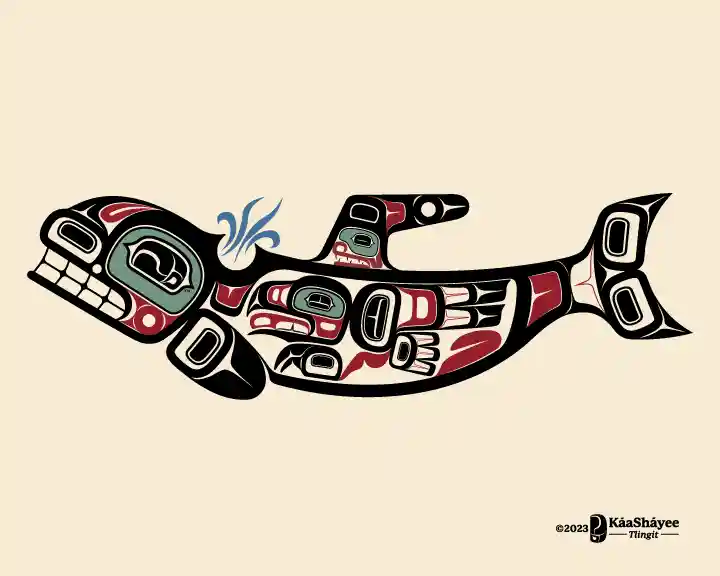
Ancestral Spirits, painted on the East wall of Kevin’s Car Wash in Ferndale, WA, presents a dual narrative embedded within Tlingit tradition. The primary design is the Kéet (Orca), a custom design by Káa Sháyee, realized after comprehensive research at the Burke Museum in Seattle. Complementing the Orca is a Cháak (Eagle), which serves as an artistic feature and a symbolic nod to the Tlingit moiety of Kevin Lee, the carwash owner. Together, the Kéet and Cháak provide a visual dialogue while honoring the complexity and richness of Tlingit culture. More details are available on the mural page for a deeper exploration of this mural’s elements.
Digitgiyáa (Hummingbird)

In the world of birds, the hummingbird or Digitgiyáa, as it’s known in the Tlingit language, is nothing short of a marvel. Before the age of high-speed cameras, these fascinating creatures seemed almost supernatural. It looked like they could zip from one flower to another without even using their wings. Yet, when they hover right before your eyes, if you pay close attention, you’ll see that their wings are a blur, moving faster than you can imagine. This creation aims to freeze that magical moment, capturing the hummingbird’s seemingly weightless state. Adding an extra layer of cultural depth, the design incorporates a Spirit Face within the hummingbird’s body. This element is more than decorative; it’s a nod to a rich tradition, as Spirit Faces often make their way into the designs of Tlingit Formline art.
Téel’ (Chum Salmon)
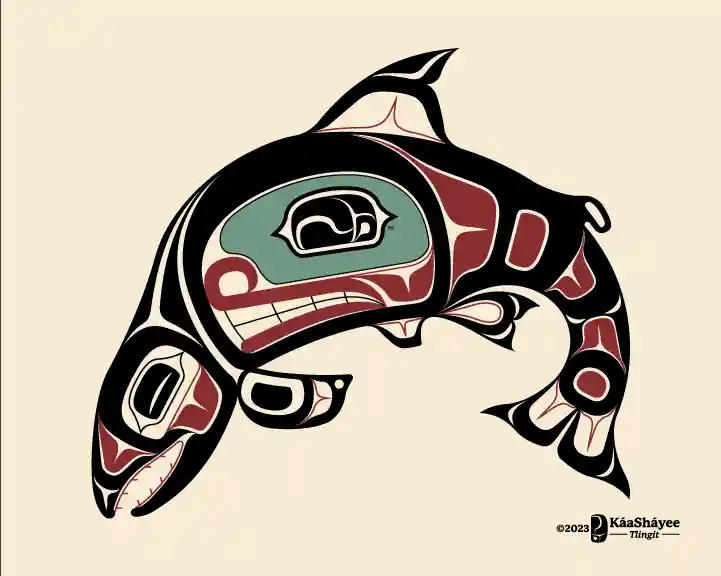
In Ferndale, a traffic box has been decorated with artwork featuring the Téel’, known as Chum Salmon in English. This design is one of two contributions to the Ferndale Arts Commission’s traffic box wrap project by Káa Sháyee. The Téel’s depiction includes a Spirit Face within its body, a characteristic often seen in Tlingit Formline designs. For those interested in learning more about the background and details of this installation, additional information is available on the Chum Salmon installation page.
Boxhead Happy
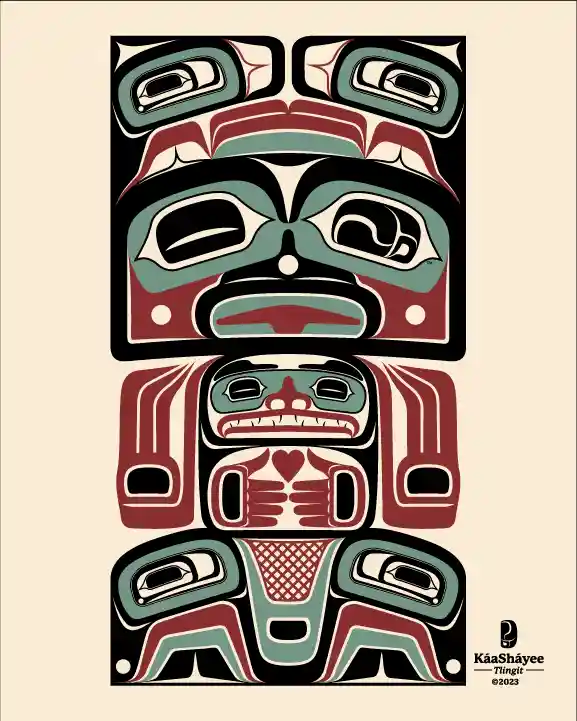
“Boxhead Happy” is another piece for the Ferndale Arts Commission’s traffic box project. Unlike its neighbor, the ‘Téel’ (Chum Salmon), this artwork takes its inspiration from traditional Tlingit Bentwood Box designs but in a tall, vertical format. It includes the element known as ‘Long in the Tooth,’ suggesting wisdom. The figure holds a heart, symbolizing a love for Káa Sháyee’s local community. Together with its counterpart, “Boxhead Happy” adds to a larger dialogue about Tlingit culture and community ties.
Long in the Tooth
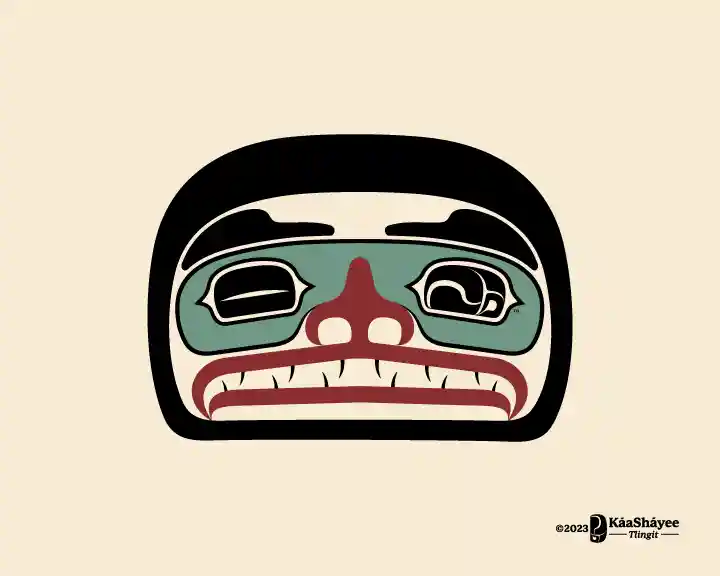
Long in the Tooth is a variation on the Tlingit Spirit Face found on Formline designs. Káa Sháyee’s variation keeps with the tradition of designing the face using traditional elements of the visual language. If you cover one side of the face, it appears as a profile of a Formline face. The top of the lips curves up, forming nostrils. The bridge of the nose pushes up into the mask or orbits of the eyes. A thin line separates the brow. What is different is a shift away from chicklet-style teeth. Instead, they are thin, long teeth. This is where it gets the name long in the tooth. The meaning is “old” Spirit Face. One of the eyes contains KáaSháyee’s signature, the questioning eye. The questioning eye results from cultural disruption, breaking his family’s past knowledge of what clan he belongs to within the Tlingit culture. He must look at things from two perspectives: that of an Indigenous person, and a person living in a colonized society.
Poisoned Apple

The artwork titled ‘Poisoned Apple’ challenges viewers to look beyond surface imagery and explore deeper layers of cultural expression. At the heart of this apple design is a Tlingit Chilkat element known as the ‘ghost face.’ This intricate motif features round, wide-open eyes and a simplified nose and mouth. The ghost face is not just a visual component; it carries specific cultural implications. Although its origin is still a subject of inquiry, it is believed to have ties to house post designs, particularly in Klukwan, a significant site for Tlingit culture and art. Most commonly found on the back panels of Chilkat tunics, its presence in the art often opens a dialogue about social obligations and traditional customs, even though its exact symbolism remains open to interpretation. The ‘Poisoned Apple,’ featuring the ghost face, invites viewers into a complex interplay of aesthetics and tradition, inviting them to appreciate the work’s form and its cultural and historical lineage.
